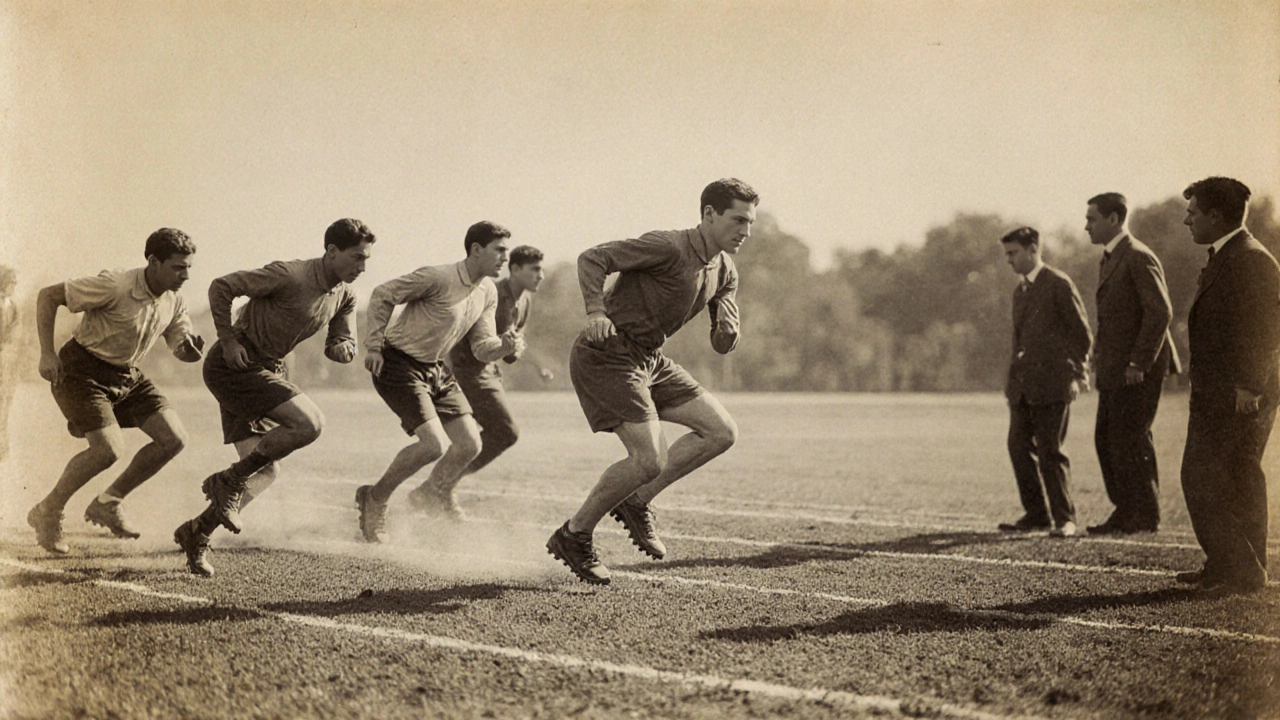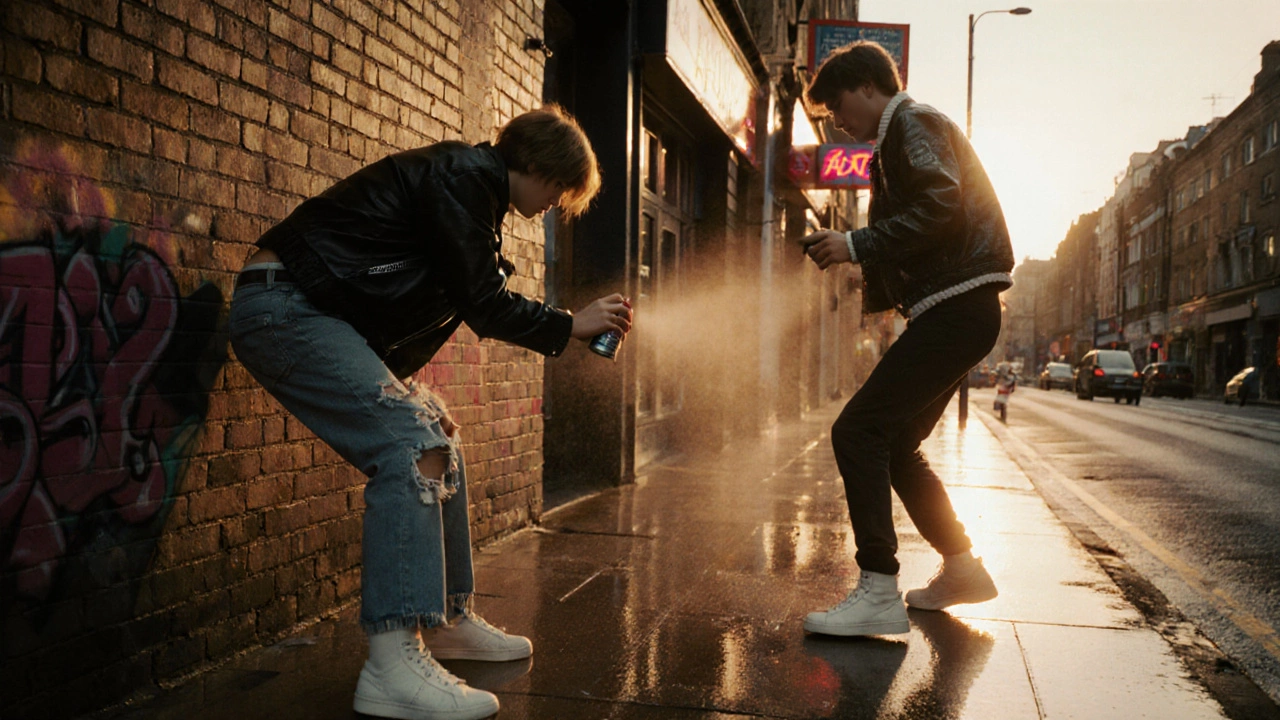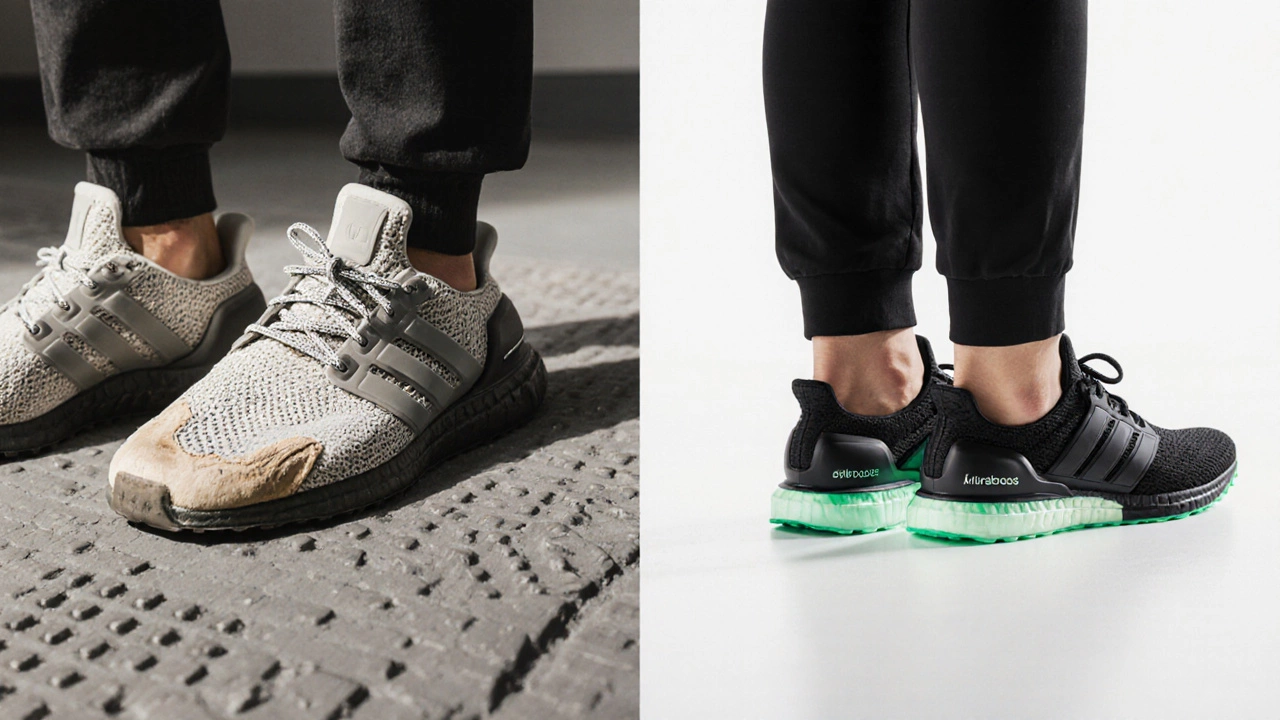Why Is It Called Trainers? The Surprising History Behind the Name

Ever wonder why people in the UK call sneakers trainers? It’s not because you’re supposed to wear them while working out - though you can. The name doesn’t come from fitness culture. It comes from something much older, and a lot more literal.
The Original Purpose of Trainers
In the late 1800s, rubber-soled shoes started showing up in Britain. They were quiet. They didn’t scuff floors. And most importantly, they didn’t slip. Athletes and coaches noticed this right away. Track and field teams began using them during practice. Not for racing - for training.Before rubber soles, most shoes had leather soles that turned slick on damp grass or dusty tracks. Athletes slipped. They twisted ankles. They lost time. The new rubber-soled shoes gave grip. Stability. Control. Coaches started requiring players to wear them during drills, sprints, and conditioning. Soon, the shoes themselves became known as trainers - because that’s what they were used for.
By the 1920s, brands like Adidas and Puma were making versions specifically for athletics. But the name stuck before any of those companies became household names. It wasn’t marketing. It was function.
Why Doesn’t America Call Them That?
Across the Atlantic, the same shoes were called something else entirely: sneakers. The name came from how quietly they moved. In the late 1800s, kids in the U.S. started wearing these rubber-soled shoes to sneak around without making noise - especially when skipping class or sneaking into movie theaters. A 1917 advertisement in the Kid’s Shoe Review called them “sneakers” because “you can sneak up on someone wearing them.”Meanwhile, in Britain, the term was already tied to training. No one was calling them sneakers because no one was sneaking around in them - they were being used to build endurance, improve form, and prepare for competition. The two names developed independently, based on different cultural uses of the same object.
When Did Trainers Become Fashion?
For decades, trainers stayed strictly functional. They were worn in gyms, on tracks, in school PE classes. Then, in the 1970s and 80s, everything changed.Music and movies started showing young people wearing trainers outside of sports. Breakdancers in New York wore high-tops. Punk kids in London painted theirs. Runners in the UK started pairing them with jeans. Suddenly, trainers weren’t just for training anymore - they were for identity.
Brands caught on. Nike, Reebok, and Adidas began designing shoes with color, style, and branding. The silhouette changed. Cushioning improved. Limited editions dropped. The line between performance gear and streetwear blurred. By the 1990s, trainers were the default shoe for millions - whether they were running a 5K or just grabbing coffee.

Why the Name Still Makes Sense
Even today, when you see someone wearing a pair of Nike Air Jordans or Adidas Ultraboosts, you’re not seeing just a fashion item. You’re seeing the legacy of an object built for motion.Modern trainers still do what the first ones did: support movement. They absorb impact. They stabilize your foot. They help you push off. Whether you’re sprinting, walking, or dancing, the design still serves the same core purpose - training your body to move better.
That’s why the name stuck. It wasn’t chosen because it sounded cool. It was chosen because it was true. The shoes were made to train. And even when they became symbols of culture, status, or style, they never stopped doing their original job.
Trainers vs. Other Shoe Names
The confusion around footwear names doesn’t end with trainers and sneakers. Around the world, the same shoe has at least five different names:- Trainers - UK, Ireland, Australia, New Zealand
- Sneakers - United States, Canada
- Athletics - South Africa
- Running shoes - Sometimes used generically, but technically refers to shoes designed for long-distance running
- Plimsolls - Old British term for canvas shoes with rubber soles, mostly used in the early 1900s
Each name reflects a different cultural relationship to the shoe. In the UK, it’s about function. In the U.S., it’s about stealth. In South Africa, it’s about sport. The word you use tells you where you’re from - and what you value about the shoe.

How to Spot a Real Trainer
Not every rubber-soled shoe is a trainer. A true trainer has specific features designed for movement:- Flexible sole - bends easily at the ball of the foot
- Lightweight upper - doesn’t restrict ankle movement
- Heel cushioning - absorbs impact from running or jumping
- Non-marking rubber outsole - won’t leave scuffs on gym floors
- Arch support - helps maintain proper alignment during motion
Many fashion sneakers skip these features. They’re built for looks, not movement. If you’re looking for a pair that actually trains your body - not just your wardrobe - check the specs. A real trainer is engineered for performance, even if it looks like streetwear.
Why This Matters Today
Understanding why trainers are called trainers helps you make smarter choices. If you’re buying shoes for daily walking, running, or standing all day, you need something designed for motion. A fashion sneaker might look good, but if it lacks cushioning or arch support, it’s not helping your body - it’s hurting it.On the flip side, if you’re buying them for style, knowing the history gives you context. You’re not just wearing a shoe. You’re wearing a piece of athletic history that traveled from British tracks to global runways.
Next time you put on a pair of trainers, remember: you’re not just stepping into footwear. You’re stepping into over a century of innovation - designed not to look cool, but to help you move better.
Are trainers and sneakers the same thing?
Yes, they refer to the same type of shoe - rubber-soled, athletic footwear. The difference is regional language. Trainers is the term used in the UK and Commonwealth countries, while sneakers is used in the U.S. and Canada. Both names describe shoes originally designed for physical training or quiet movement.
Why do some trainers have no laces?
Laceless trainers, like slip-ons or pull-on styles, are designed for convenience, not performance. They’re popular in casual wear and fashion. But they often lack the secure fit needed for serious training. If you’re running or lifting, laced trainers give better support and reduce injury risk.
Can you use trainers for running?
You can, but not all trainers are made for running. Running shoes have extra cushioning in the heel and forefoot, a more rigid sole to guide your stride, and often a higher drop from heel to toe. General trainers are more versatile but may not offer enough shock absorption for long distances. If you run regularly, get shoes labeled as running-specific.
Do trainers last longer than other shoes?
It depends. High-quality trainers made with durable rubber and breathable mesh can last 300-500 miles of use. But if you wear them every day for walking or standing, they’ll wear out faster than dress shoes. The key is usage: trainers aren’t built for formal settings or heavy daily wear - they’re built for motion, so they wear out faster when used outside their purpose.
Why are some trainers so expensive?
Price comes from branding, limited releases, technology, and materials. A $200 pair might use a proprietary foam that reduces energy loss by 15%, or have a woven upper that cuts weight by 20%. But many high prices are driven by hype - not performance. A $60 trainer from a lesser-known brand can still offer great support if it has the right features.
If you’re looking to buy your next pair, ask yourself: Do I need them to move better - or just look better? The answer will tell you whether you’re shopping for a trainer… or just another pair of shoes.